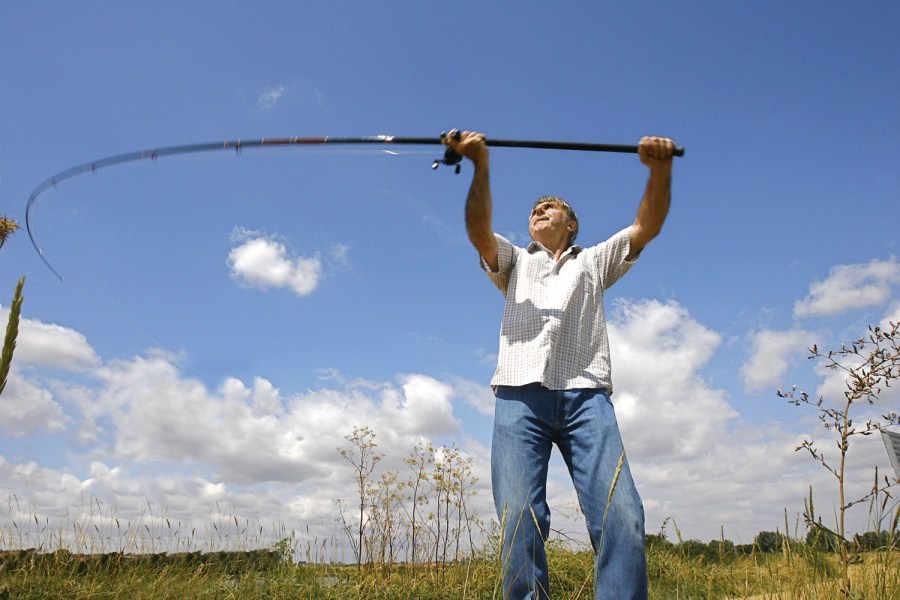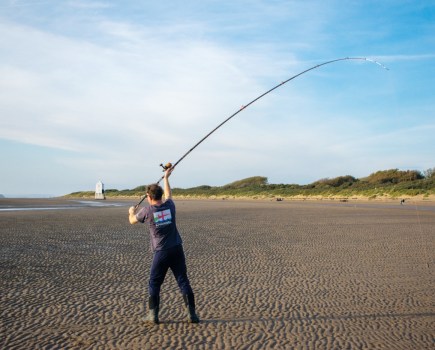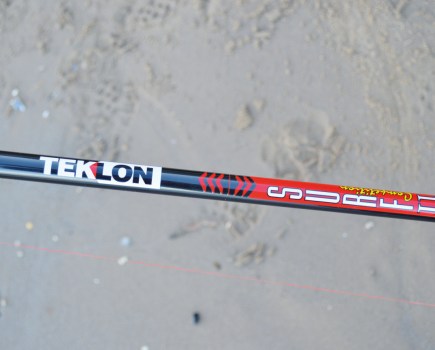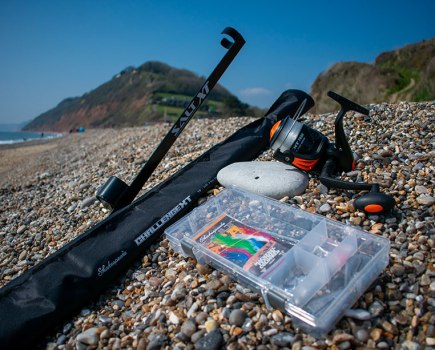PRICE £255.00
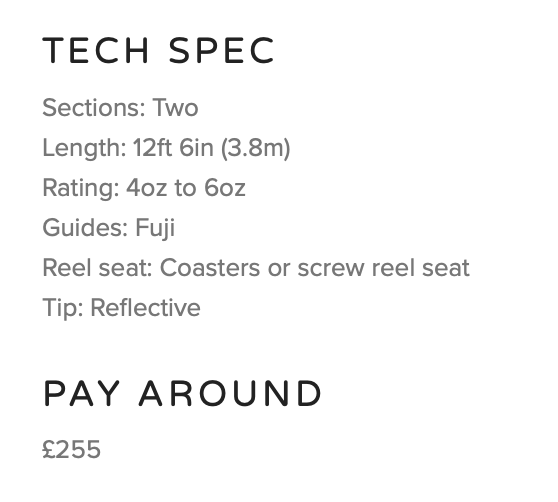 Cono-flex has produced a rod designed for anglers approaching their middle years who want to bend their beach rods. John Holden tests one and reckons casters will be able to ‘cruise in comfort’
Cono-flex has produced a rod designed for anglers approaching their middle years who want to bend their beach rods. John Holden tests one and reckons casters will be able to ‘cruise in comfort’
Now and again a rod comes along that changes attitudes and fires anglers’ enthusiasm. Such rarities include Hardy’s Longbow, the Cod Pole, Abu 484, Cono-flex 240T and the Zziplex GS Match.
They all became successful by filling a need, not necessarily because of anything radical in their design and engineering. First came the demand, then the product – always this way around.
The revolutionary Abu 484 of the late 1960s, for example, filled the vacuum created by a burgeoning interest in pendulum casting and long-range fishing. It had a fairly quick tip plus the butt stiffness essential for powering away a big cast. Before the 484 your best, sometimes only, option was to replace the butt of an ordinary rod with a chunk of high tensile aluminium tube.
A new gap has appeared in the market. Barely recognisable as yet, it is bound to expand simply because so many experienced fishermen are heading towards middle age. Within the ranks of newcomers as well, the grey-haired outstrip youngsters by a wide margin. Ever since codling came back in reasonable numbers, a revitalised band of former anglers, many well into retirement, are heading for the beaches again.
With age comes an inevitable drop in casting power. After maybe 40 years of fishing with tournament-grade weapons the day arrives when a rod that once felt perfectly controllable rips your arms out of joint and plays hell with your back.
For born-again fishermen in particular, the reality of modern tackle springs some nasty surprises – and not just the price. The macho rods they used when Maggie Thatcher lived at Number 10 are pussycats by modern standards. After a lay-off of 25 years or more, many people can hardly bend the tip of the latest beach rods, never mind make the butt work.
Sea angling demographics being what they are, a nucleus of fishermen, tackle dealers and at least one major rod manufacturer have sensed a change in the air. Once again a vacuum is developing that heralds a shift in thinking soon to be reflected in tackle design. In this new era of beach rods for Saga louts, the first major contender comes in the shape of the Cono-flex Easy Cast.
“The idea for this rod came from fishermen past their best at casting who wanted something easier to use,” explained Cono-flex’s Mike McManus.
“I began designing it about two years ago, aiming for a rod that would be good for off-ground and half-pendulum styles, even the overhead thump.”
A ROD THEY CAN BEND
Why not follow the current fashion and produce a long rod? “We were one of the first companies to make long rods. We know how to design them and we appreciate that they’re necessary for certain fishing methods. They’re also good for people who lack the physical ability to cast powerfully. Personally, I think they’re awkward to fish with.”
Ultra-long rods are not what customers want. A typical phone call goes: “I’m over 50 and I can’t cast like I used to. I’m looking for a rod similar to my old one, but less powerful, more forgiving and easier to handle.” Being pendulum or off-ground casters, most callers do not want to trade up in length and revert to thrashing. They want to do what they’ve always done, but more easily.
A man who understands the sport and listens to what anglers are saying, Mike set about designing the solution. He was confident of the rod’s appeal to an even wider market.
“It’s amazing how many people can’t cast more than about 120 yards. So I thought, let’s go for it and make a rod that meets their requirements too. I went for
12ft 6in because that’s a sensible length and makes for a well-balanced rod. Torquay custom builder Phil Hyde tested the prototypes and came up with the name Easy Cast. It’s a general purpose 5oz rod anyone can use.”
In another departure from the status quo, Cono-flex chose S-glass blank material enhanced here and there with carbon fibre. Rare in the UK sea market, S-glass has long been used with great success elsewhere in the world. Even today many designers consider it an excellent alternative to carbon fibre, superior in some applications, including beach rods.
Mike had always been keen to use it but for years the material was scarce in the UK and the costs sky high. The Easy Cast project happily coincides with lower prices and better availability. S-glass matches some types of carbon for strength, but has more flex.
It is light and tough, producing a lively, durable rod. For casting, in particular, S-glass retains a bit of give under heavy load. Sufficiently quick and powerful for high standards of casting, it avoids the critical timing and potential viciousness of rods rich in carbon.
More benefits of S-glass include a generous band of distances within which the rod works smoothly and efficiently, plus tolerance of both style and error. As well as an antidote to age-related power deficiency, the Easy Cast is equally good medicine for most casting ailments, virtually all of which centre on the caster’s inability to bend a rod into an efficient curve.
When a fisherman begins the downhill slide towards Zimmer-land, a rod that may once have been manageable gradually becomes too much of a handful – hence the phone calls to Cono-flex. It’s significant that many of these people are excellent casters and highly experienced anglers, not duffers looking for a quick fix.
Why significant? Beach fishing desperately needs to escape from the stupid, corrosive peer pressure that persuades even beginners and inexperienced fishermen, regardless of age and physique, to buy tournament-grade rods instead of those they can use and enjoy. Expect sighs of relief as the top men grow older and trade down in rod power, encouraging the rest of the pack to follow without losing face.
Mike sums up the technical side: “Today’s rods, especially the very slim ones, are built of high modulus carbon fibre, which is very stiff and unyielding when it approaches its locking point. No give at all. S-glass is different because it keeps moving. With fixed-spools in particular you’ve got to have that movement in the blank. The harder you work S-glass, the more you get out of it.”
SO HOW DOES IT ‘DRIVE’?
The 12ft 6in (3.8m) Easy Cast follows the well-established format of long tip and short handle, the two connected by a spigot. The tip is 92in of black, unground blank whipped in gold-tipped red, with Fuji BLVLG and BSVLG rings on the multiplier version and Fuji BSVLG rings for fixed-spool.
Multiplier casters get coaster clips on a slim (but at 25mm not silly slim) 58in rubber-sleeved handle. The fixed-spool version uses the same handle with a screw reel seat. Cono-flex engineering and build quality shine through. At £255 the price is reasonable.
With the recommended half-pendulum style and modest effort, the test rod propelled 150g of lead some 160m. Wound up fully it would cast much farther. But pushing for sheer distance defeats the point. More important, 130m or so with baits is little more than relaxed cruising. To underline its versatility, the rod is sweet, friendly and kick-free within the 80-100m band, which considering beach angling as a whole is where the vast majority of baits actually end up.
As compression gets underway, the Easy Cast feels quite bendy. It never locks suddenly as carbon blanks do, which initially gives the impression that something’s lacking. Wrong. At peak power the rod tightens up nicely before the cast zips away thanks to S-glass’s excellent recovery speed.
Because the working curve is so generous, power delivery is creamy and progressive. That’s why S-glass and a fixed-spool reel work so well together, and multiplier tuning is rarely an issue. Style-wise, the rod adapts to anything from a simple off-ground layout to a moderately wide pendulum swing. And as Mike intended, it’s not bad with an overhead thump either.
The engineering features that make the blank so nice to cast also guarantee high standards of bite detection and general handling. My fishing tests were restricted to school bass, eels and flounders. No problems at all there. The prospect of an Easy Cast with me on one end and chunky autumn codling on the other comes close to my idea of angling heaven. I’d use it for surf bass fishing as well, though these days preferring 125g of lead, which probably makes me a Philistine.
The recommended 5oz optimum casting weight is spot-on, as is the tad heavier but common 150g. The blank works well down to 4oz, below that becoming a little touchy about timing and sinker drop but do-able. Fishing with 6oz (170g) at modest ranges will be stress-free.
Where sheer distance is not the issue – and if they are honest most top fishermen would agree that sweating for a few extra metres pays off only now and again – such quality, user-friendliness and versatility make the Easy Cast an excellent choice for all open-ground beach anglers. Few would be limited by its performance. Highly recommended.

